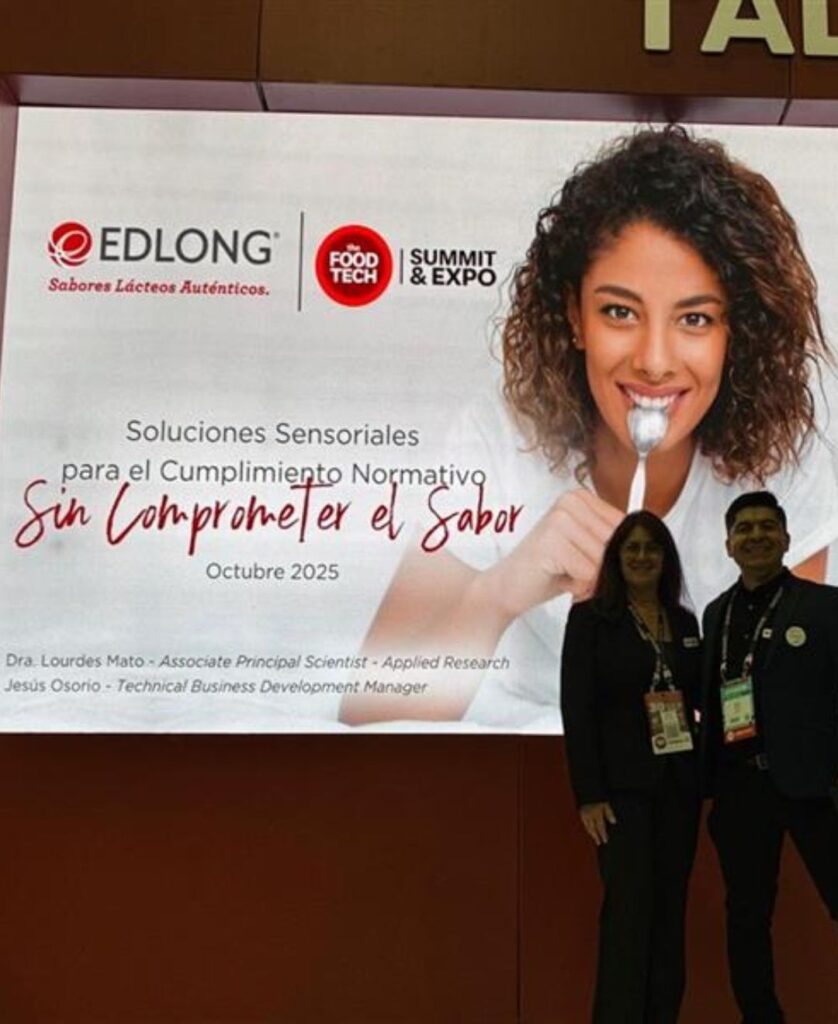Salt & Sodium Reduction Solutions for Evolving Food Regulations
Food regulations aimed at reducing the negative health impacts of High Fat, Sugar, Salt (HFSS) products on populations are nothing new. However, the increasing prevalence of such policies
can leave companies scrambling for solutions.
Some of the more recognizable schemes are the Nutriscore and “traffic light”, labeling system, which have spread across Europe. Others are the Octagonal Warning Label (OWL), more commonly known as “black labels”, which continue to expand across Latin America.
While these labeling systems are widely praised and adopted by an increasing number of countries, they aren’t without their detractors.
For example, simply stepping down a grocery or convenience store snack aisle, and you’ll be overcome by a sea of red lights and black octagons.

This may lead to healthier choices; however, it also feeds a narrative and expectations that developers are struggling to overcome.
To put it simply: unhealthy = delicious, indulgent, and satisfying.
Changing this perception becomes even more difficult when so many of the “healthier” options only reinforce and confirm their suspicions.
But in no way has to be the case.
With the right partners and approach, deliciously flipping the script is not only possible but can become the expectation.
Challenge Tackling Food Regulations
One of the countries leading this charge has been Mexico. There, the widespread implementation of its own “black labels” began hitting store shelves in January 2020.

So, it was only fitting that Edlong’s very own Dr. Lourdes Mato, Associate Principal Scientist – Applied Research at Edlong, and Jesus Osorio, Edlong’s Business Development Manager—Mexico, tackled this topic at Food Tech Summit Expo 2025 in Mexico City in their technical conference titled “Technologies that can Comply with New Regulations Without Sacrificing Flavor“.
In this talk, they identified the growing list of challenges that evolving regulatory frameworks are creating for developers. More importantly, they explored how Edlong can help companies overcome these issues and stay ahead of new food regulations.
“It’s crucial to understand that meeting HFSS food regulations involves so much more than just adding or taking something away,” says Dr. Mato.
“It takes a lot more to release a product in a supermarket, because you have to look at so many aspects.”
She continues, “Whether it’s reducing salt, sugar, fat, or even adding new ingredients, you’re making major changes to your food matrix. Changes to any one of these things can impact mouthfeel, bring off tastes, and possibly cause problems with processing.”
Dr. Mato explains how, for example, sugar reduction affects more than just perceived sweetness. It can also impact moisture and viscosity, which can hurt mouthfeel. In the case of something like coffee, it is used to mitigate the bitterness and balance out the overall taste experience.
The same can be said about reducing salt, which does much more than regulate saltiness. Aside from its role in shelf stability, it works to elevate and enhance the flavor attributes of other ingredients. This is why ‘not enough salt’ is a synonym for blandness.
Although one may be able to safely reduce salt or sugar to a certain extent without major issues, that usually won’t be enough to really move the needle. However, crossing that threshold will require a much more comprehensive approach.
Meeting Food Regulations, Satisfying Consumers
Meeting shifting food regulations and achieving successful sugar and salt reductions or better-for-you alternatives demands a robust sensory-focused strategy.

“This goes far beyond just one single sensory attribute,” stresses Dr. Mato. “You can’t take a piecemeal approach. You might think that reducing one ingredient or introducing something new might solve the problem, and it might. But you end up introducing a handful of other issues to your formulations that you now have to contend with.”
This isn’t only due to the complexity and interconnectedness of components in a product’s matrix. Developers also must consider the cross-modal interactions between taste, aroma, texture, and a plethora of other factors.
“For example, our masking technologies are incredible at working with and covering off notes, such as bitterness, astringency, and more. However, successful formulations must extend beyond a single attribute from a sensory standpoint. So, it’s not masking only for off notes; it’s also considering notes in terms of aromatics or flavors you perceive. It’s also working to create an eating experience that exceeds the expectations of what ‘healthier’ products can do.”
Dr. Mato goes further, stating that, “At Edlong, we take pride in understanding the complex relationship between ingredients and sensory perception. Not only that, but by working with our partners from early on in the process, we can leverage our flavor technologies and expertise to craft custom solutions, fast.”
Between incredibly authentic flavors and cutting-edge flavor technologies, such as Sweet Spot™ (sweetness enhancement), salt and mouthfeel enhancers, and a wide range of masking products, including the revolutionary Supermaskers™, Edlong enables developers to meet regulatory requirements and create truly satisfied customers.
Edlong in Action
“A perfect case of just what Edlong’s flavor technologies can do are the results from an internal study where we compared the effect of one of our milk flavors in reducing coffer bitterness in a similar manner whole milk does,” describes Dr. Mato.
The study replicated certain conditions from a study previously conducted at Ohio State University by Haines & Simons (2024)[1]. In the study, the authors concluded that odor senses were necessary to perceive a reduced bitterness of coffee when whole milk is added.

Dr. Mato goes further, explaining, “Our study then focused on investigating if an Edlong milk flavor added can have the same effect on reducing the bitterness of coffee as whole milk can.
The results revealed that when adding water to coffee at the same volume as whole milk and evaluating with an open nose, there was a significant difference between the samples. The sample with whole milk was perceived as less bitter.
However, when an Edlong milk flavor was added to a sample containing water at a total equal volume as the whole milk version, no significant differences were perceived between the two samples. Meaning both equally reduce bitterness to a similar degree.”
Other tasty examples of these technologies and flavors were on full display in demos, such as the Cheddar/Asiago cheese chips from IFTfirst 2025, which showcased 30% less sodium with 100% of the enjoyment. Or the rich and indulgent crowd favorite Reduced Cocoa Plant-Based Beverage from FTS 2025, featuring Edlong’s sweetness and mouthfeel enhancers, masking technologies, dairy-free flavors, and 50% less cocoa content!
Following the growing demands of HFSS food regulations can be extremely stressful. But it doesn’t have to be.
From salt and sugar reduction to lower-fat and better-for-you, partnering with Edlong can help rewrite the story on everything healthier indulgence can be.
[1] Haines, M. B., & Simons, C. T. (2024). To Milk or not to Milk? The impact of Dairy Aroma on Cold Brew Coffee . Society of Sensory Professionals.
Topics: Better For YouHealthy Reduction
Resource Type: Article